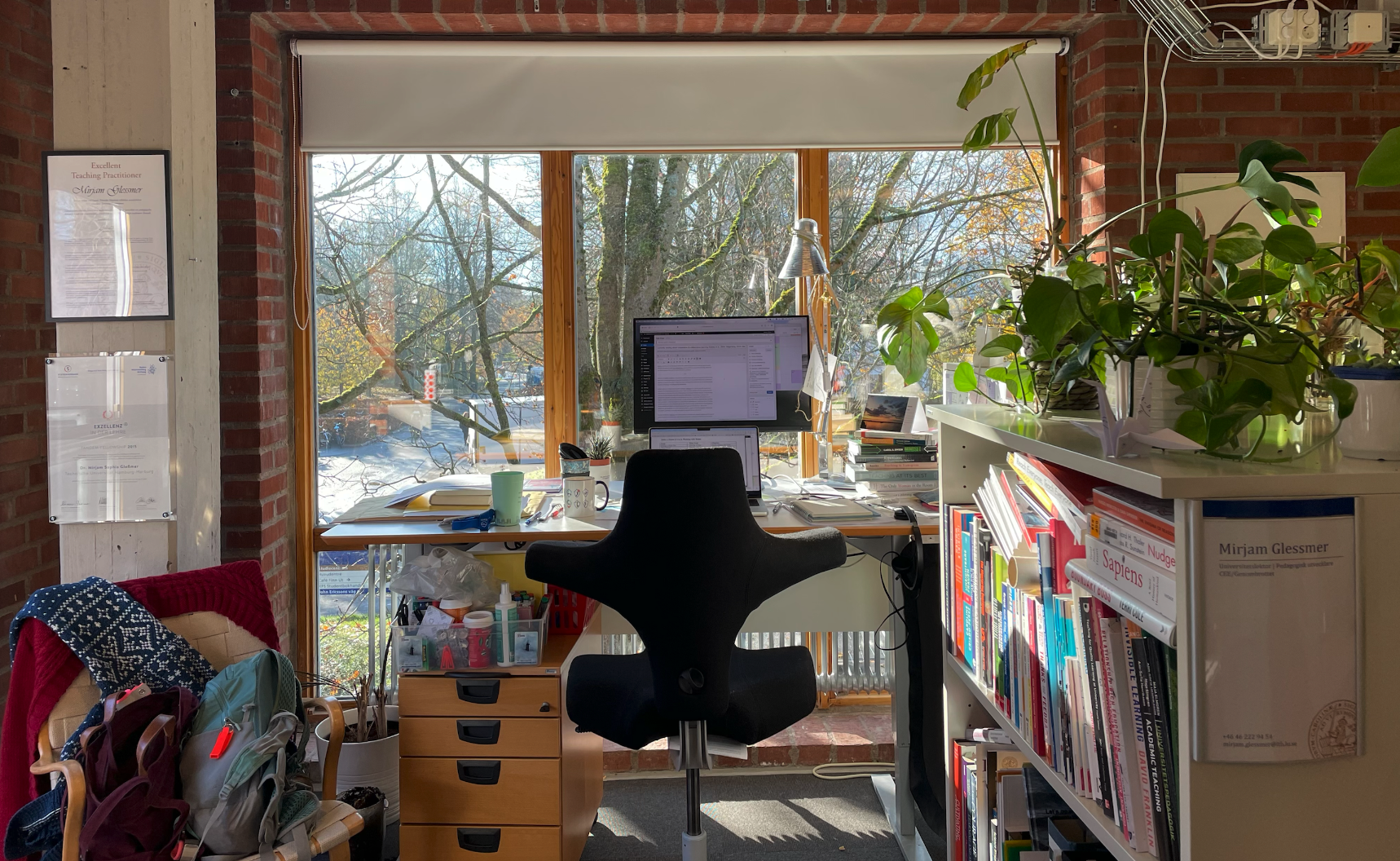
Currently reading about cooperative & collaborative learning (Oakley et al., 2004; Møgelvang, 2023; Wieman et al., 2014)
iEarth’s current journal club paper deals with collaborative exams as learning opportunities, and this fits perfectly with Anja Møgelvang’s recent article on cooperative learning, where we can find inspiration for how to make this work in practice. So here are my thoughts!
How can we expect students to be skilled in collaborating with diverse stakeholders when they enter their chosen professions if we don’t help them learn these skills? Obviously a rhetorical question, of course we need to help them learn collaboration skills! And we can do that during all parts of learning, including during assessment.
In their article on collaborative exams in physics, Wieman et al. (2014) argue for exams that consist of an individual part (55 min in their case), that then switch over into a group part (30 min), where the question from the individual part are being revisited in groups. Since students already carefully thought about the questions individually in the first part, coming to an agreement in groups is usually not time-intensive any more. Sometimes the questions are slightly modified for the second part, too, e.g. by turning short-answer questions into multiple-choice questions. Grading happens in a way that the individual part counts the most (75-85%), and that in the few cases where the group part receives a lower grade than the individual part, those students with higher individual grades don’t get a grade reduction. But in their experience, group grades are almost always at least as good as individual grades, and usually even better, pointing to learning taking place during the group discussions.
Student feedback in Wieman et al. (2014) seems to indicate that students appreciate this type of exam as a learning opportunity, with 87% recommending continuing this form of assessment. While realizing mistakes made in an exam right after it has been handed in is probably never pleasant, here at least they get to correct it right away, and that can even lead to small contributions to a better grade.
Overall, this sounds like a really good way of making exams a learning opportunity that is also more authentic to how we expect students to work in their future professions. But how can we support groups to work smoothly during those (likely) high-stress situations? Wieman et al. (2014) state that they introduce collaborative learning activities already before the exam, but what could that look like in practice?
Here, Anja Møgelvang‘s work (that she introduced us to in an inspiring workshop last year, and that was recently published with a focus on how we can use it in oceanography) can help. Anja introduces cooperative learning as a more structured form of collaborative learning, where clarity about the structure, the roles that individuals play in it, and how they have to work both independently but also contribute to the shared task makes it more likely that students work successfully together, thus contributing to increased sense of belonging and positive belief in their own abilities. There are several different teaching methods where the students depend on each other and their individual contributions that Anja presents in the article, like for example a jigsaw (here is a blog post on how we use a jigsaw in field teaching!).
But more important than what method people ultimately choose, is, I think, something Anja points out — and this is likely even more important in the framing of an exam than it is for “just” in-class group work — that it is really important to acknowledge that students have prior experiences with group work that are likely not only positive. Being transparent about why group work is chosen despite this, including for their own learning of important skills for their future professions, and for the benefit for society, can help them engage despite previous experiences.
The recommendation is then to have 3 to 5 students per group, which allows everybody to contribute while also putting slight pressure on everyone to contribute, thus discouraging free riding. Groups should be assigned by the teacher, who should make sure they are diverse, and groups should ideally persist for long enough (at least a month) for students to actually have sufficient time to start trusting and depending on each other. One activity that Anja points to that I think is really important is setting up a group contract: Oakley et al. (2004) describe one way of settling team policies and agreeing on team expectations (as well as many more useful tips for turning student groups into effective teams, including explicitly matching students with matching availabilities for group work, giving guidance on how to deal with conflicts, and supporting peer-rating — 100% recommend reading this article!).
When students are prepared for group work in such a way and have had opportunities to practice working together in a team, I think collaborative exams are an excellent way of making sure that learning happens not only in preparation of, but also during, an exam.
Do you have experiences with collaborative exams that you are willing to share? Or thoughts on the idea? I would love to hear from you! :-)
Oakley, B., Felder, R. M., Brent, R., & Elhajj, I. (2004). Turning student groups into effective teams. Journal of student centered learning, 2(1), 9-34.
Møgelvang, A. 2023. Cooperative learning in oceanography. Oceanography, https://doi.org/10.5670/oceanog.2023.302.
Wieman, C. E., Rieger, G. W., & Heiner, C. E. (2014). Physics exams that promote collaborative learning. The physics teacher, 52(1), 51-53.